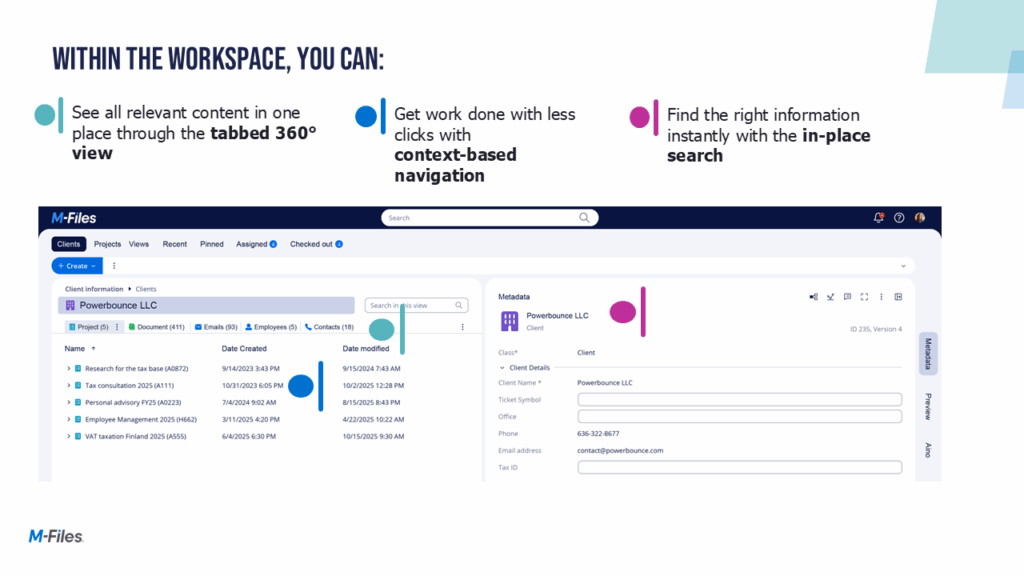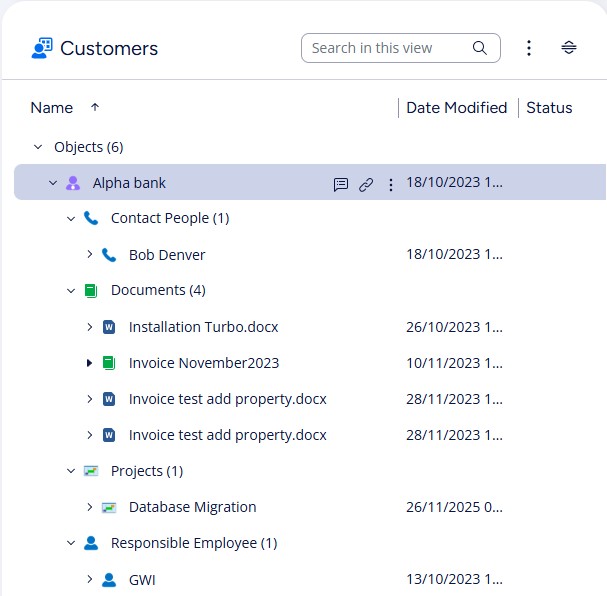In one of my previous blog I announced a big improvement in M-Files: the Workspaces.
Following a period of discovery and experimentation that spanned multiple weeks, the logic behind this enhancement is now apparent.
Let’s take a closer look at the benefits of this evolution.
The Challenge
Today, workers spend hours searching through documents and switching between applications trying to find the right information. Clearly, we are all overwhelmed by information, and this is a problem we are all struggling with.
Furthermore, most document management solutions still rely on folders and file paths. This outdated approach forces users to search for information across disconnected systems, resulting in inefficiencies and frustration. In fact, studies show that employees can spend up to 20% of their time searching for information. This represents a significant loss of productivity.
Why context matters
As you know, M-Files’ strength lies in its ability to link company data, even when that data isn’t a document.
For instance, this project is being carried out for this client by this team, which comprises these employees. These employees have generated documents such as reports, studies, and implementation guides.
Context is the glue that connects information to business processes. Starting from context eliminates guesswork and reduces friction. Workspaces makes this possible by leveraging a knowledge graph-like architecture that intelligently links documents, projects and people.
Introducing M-Files Workspaces

Workspaces is a new user experience layer built on M-Files’ context-first architecture. Instead of starting with files, users begin with context like a project, client, or process and instantly access all related documents, tasks, and stakeholders in one unified view.
Imagine opening a project workspace and seeing everything you need: contracts, emails, tasks, and team members, all in one place. No more digging through folders or juggling multiple apps.
As mentioned previously, M-Files creates links between objects by default. For example, when we check for a customer, we see everything related to it, as shown below:

It’s great as long as you don’t have tons of data. However, when you have years of projects, communications, and many stakeholders, it can end up working against you. That’s where workspaces come in. With workspaces, you can choose the information you need and display it in a more structured way, thanks to tabs.
In my example, I decided to display only the data that makes sense to me. For a customer, I only want to see Documents and Projects.

Of course, it’s not so impressive in a demo environment like this one, but it makes a big difference in a real situation.
Ready to Experience Workspaces?
If you’re tired of wasting time searching for files and want a smarter way to work, it’s time to explore M-Files Workspaces. Learn more here and see how context-first document management can change the way you do business.
Feel free to reach out to us for more insight.
![Thumbnail [60x60]](https://www.dbi-services.com/blog/wp-content/uploads/2022/08/GME_web-min-scaled.jpg)

![Thumbnail [90x90]](https://www.dbi-services.com/blog/wp-content/uploads/2022/08/MOP_web-min-scaled.jpg)
![Thumbnail [90x90]](https://www.dbi-services.com/blog/wp-content/uploads/2022/08/ATR_web-min-scaled.jpg)